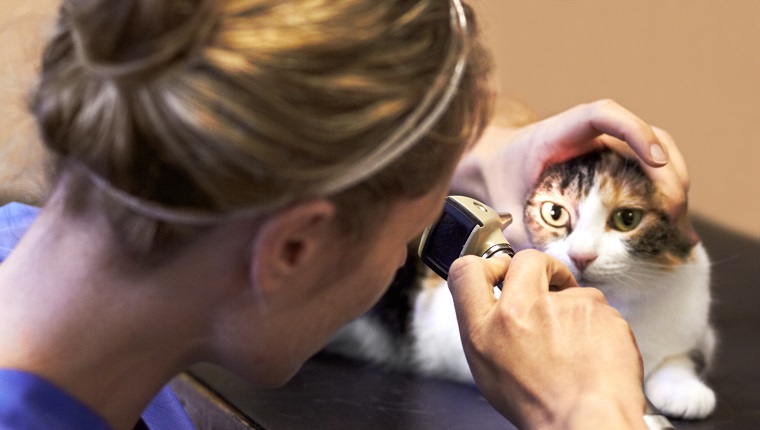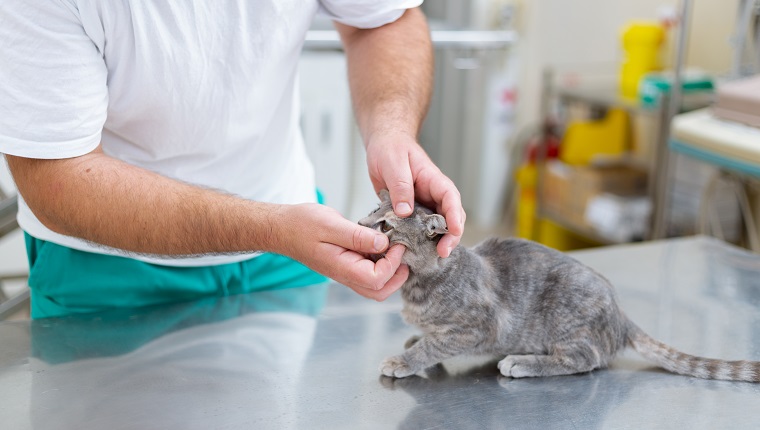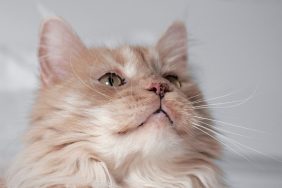Corneal ulcers in cats affect the cornea, which is the clear front surface part of a cat’s eye. When one of the layers of the cornea is damaged, such as by being scratched, it becomes a corneal ulcer.
There are a number of causes for these ulcers in cats, and the condition can also manifest itself in varying degrees of severity.
If you see signs that your kitty might be suffering from any eye issues, then you must consult your veterinarian for a proper diagnosis and advice. Here’s what you should know about the symptoms, causes, and treatments of corneal ulcers in cats.
Symptoms Of Corneal Ulcers In Cats
Corneal ulcers in cats can produce a range of different symptoms that can be painful for a cat. Some of the most common symptoms include:
- Redness of the eye and eye area
- Discharge from the eye
- Squinting a lot
- Pawing and rubbing at the affected eye
Causes Of Corneal Ulcers In Cats

The cause of corneal ulcers in cats is often related to trauma. The sort of trauma that might cause a cat to develop these ulcers could come from rubbing against a hard or rough surface or being scratched by another cat or animal.
Chemicals, such as those in harsh shampoos or dust from construction materials, can also cause ulcers.
Veterinary Treatments
If you think that your cat might be suffering from corneal ulcers, then your veterinarian will want to carry out a full physical examination and pay close attention to your cat’s eyes.
Vets can use various tests and methods to help determine a diagnosis, including checking the pressure of the eye, analyzing the eye’s tear production capabilities, and using fluorescein dye to highlight any issues.
Treatment can vary. In some cases, vets might focus on pain management and clearing up any infections. As ever, if your vet prescribes your cat any medicine, it is vital that you stick to the exact frequency and dosage instructions and complete the full course of medication.
In more severe cases, cats may require a surgical procedure, which can involve suturing a cat’s third eyelid over the cornea while it heals.
Has your cat ever developed a corneal ulcer? How did your vet help your kitty’s eye heal? Tell us all about it in the comments below.









